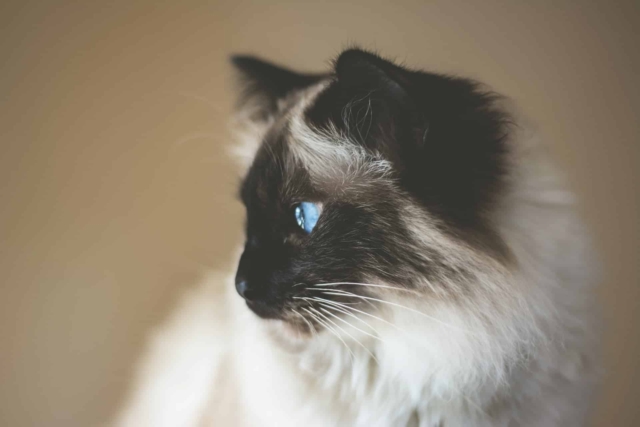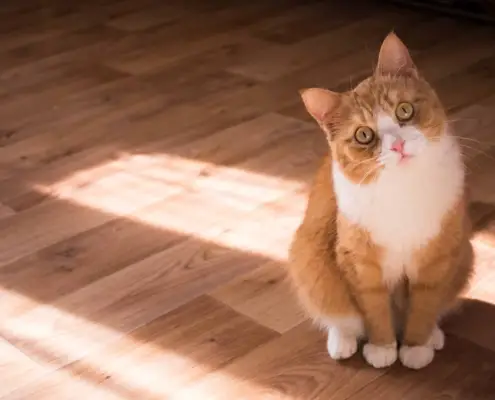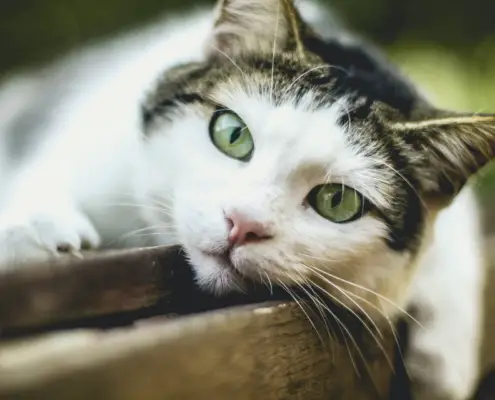
Cats have always been fascinating creatures, with their graceful movements and mysterious ways. One aspect of their behavior that has puzzled many cat owners is their eye movements. Do cats blink? This question has led to a deeper exploration into the science behind feline eye movements and the purpose of blinking in animals.
Do cats blink?
At first glance, it may seem like cats don’t blink as often as humans do. Unlike humans, who blink every few seconds, cats appear to keep their eyes open for extended periods of time. However, upon closer observation, it becomes clear that cats do blink, just not as frequently as humans.
Cats have a different blinking pattern compared to humans. While humans blink to lubricate and protect the eyes, cats have a more efficient way of achieving this. Their eyes have a third eyelid, known as the nictitating membrane, which helps to keep their eyes moist and clean. This membrane acts as a natural protective shield, eliminating the need for frequent blinking.
The purpose of blinking in animals
Blinking serves a vital purpose in animals, including cats. It helps to moisturize the eyes, spread tears evenly across the surface, and remove any debris that may have accumulated. Additionally, blinking also protects the eyes from bright lights, foreign objects, and potential threats.
In humans, blinking is also associated with non-verbal communication, conveying emotions such as surprise, happiness, or even flirtation. While cats may not express emotions in the same way, their blinking behavior can still carry meaning.
Blinking behaviors in cats
While cats may not blink as frequently as humans, they still exhibit unique blinking behaviors. One common behavior is the “slow blink.” This is when a cat deliberately closes and opens its eyes slowly. Slow blinking is often interpreted as a sign of trust and relaxation. It is a way for a cat to communicate that it feels safe and comfortable in its environment.
On the other hand, rapid blinking or excessive blinking can indicate discomfort or stress in a cat. This could be a response to an unfamiliar or threatening situation. It is important for cat owners to pay attention to their cat’s blinking patterns to better understand their emotions and well-being.
The science behind feline eye movements
The fascinating truth about cat blinking lies in the science behind their eye movements. Cats have a unique visual system that allows them to excel in low-light conditions and detect even the slightest movements. Their eyes have a high concentration of rod cells, which are responsible for detecting motion and light.
The arrangement of a cat’s eyes also contributes to their exceptional vision. Cats have forward-facing eyes, giving them binocular vision and depth perception. This allows them to accurately judge distances and pounce on their prey with precision.
Common misconceptions about cat blinking
There are several common misconceptions about cat blinking that need to be addressed. One misconception is that cats never blink. As mentioned earlier, cats do blink, but their blinking pattern is different from humans.
Another misconception is that cats blink to show affection. While slow blinking can be interpreted as a sign of trust and relaxation, it does not necessarily indicate affection. Cats have various ways of expressing their affection, such as purring, kneading, and rubbing against their owners.
Factors that affect cat blinking
Several factors can affect a cat’s blinking behavior. One factor is the cat’s age. Kittens tend to blink more frequently than adult cats, as their eyes are still developing and require more lubrication.
The cat’s environment can also influence its blinking behavior. A stressful or unfamiliar environment may cause a cat to blink rapidly or avoid blinking altogether. Conversely, a calm and familiar environment can promote relaxed blinking.
How to interpret your cat’s blinking
Understanding your cat’s blinking patterns can provide valuable insights into their emotions and well-being. Slow blinking is generally a positive sign, indicating trust and contentment. If your cat blinks excessively or rapidly, it may be a sign of stress or discomfort.
Observing your cat’s overall body language is also important in interpreting their blinking. A relaxed and open body posture, coupled with slow blinking, suggests a content and relaxed cat. Conversely, a tense body posture and wide-open eyes without blinking could indicate fear or anxiety.
The significance of slow blinking in cats
Slow blinking, also known as “cat kisses,” is a unique behavior that holds great significance in feline communication. When a cat gives you a slow blink, it is a sign of trust and acceptance. By reciprocating with a slow blink of your own, you are establishing a bond and showing your cat that you trust them as well.
Engaging in this slow blink exchange can help strengthen the bond between you and your cat. It is a way of communicating that you are not a threat and that you respect their space. So, the next time your cat blesses you with a slow blink, be sure to respond with one of your own and cherish the special connection you share.
The fascinating truth about cat blinking
In conclusion, cats do blink, albeit less frequently than humans. Their unique blinking patterns, such as the slow blink, hold meaning in feline communication. Understanding these behaviors can provide valuable insights into a cat’s emotions and well-being.
The science behind feline eye movements reveals the exceptional visual abilities of cats and how their eyes are adapted to excel in various lighting conditions. Cats’ blinking behaviors are influenced by factors such as age and environment, and interpreting these behaviors can help cat owners better understand their furry companions.
So, the next time you catch your cat blinking, remember that it is not just a random eye movement. It is a form of communication that reflects their trust, comfort, and contentment. Embrace the fascinating truth behind cat blinking and cherish the special bond you share with your feline friend.
Strengthen your bond with your cat by engaging in a slow blink exchange. Show them that you trust and respect them by reciprocating their slow blink.
If you enjoyed my article, I would appreciate you sharing it with your network.

Sima Ndlebe
Sima writes for CatBuzz. He is interested in Cats, Health and Fitness, and Entrepreneurship.
Published: 13 November 2023




